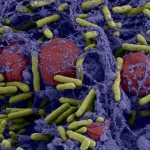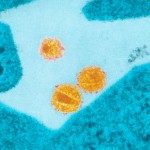Link to Pubmed [PMID] – 19380869
Blood 2009 Jun;113(24):6085-93
The stromal cell-derived factor-1/CXCL12 chemokine engages the CXCR4 and CXCR7 receptors and regulates homeostatic and pathologic processes, including organogenesis, leukocyte homeostasis, and tumorigenesis. Both receptors are widely expressed in mammalian cells, but how they cooperate to respond to CXCL12 is not well understood. Here, we show that CXCR7 per se does not trigger G(alphai) protein-dependent signaling, although energy transfer assays indicate that it constitutively interacts with G(alphai) proteins and undergoes CXCL12-mediated conformational changes. Moreover, when CXCR4 and CXCR7 are coexpressed, we show that receptor heterodimers form as efficiently as receptor homodimers, thus opening the possibility that CXCR4/CXCR7 heterodimer formation has consequences on CXCL12-mediated signals. Indeed, expression of CXCR7 induces conformational rearrangements within preassembled CXCR4/G(alphai) protein complexes and impairs CXCR4-promoted G(alphai)-protein activation and calcium responses. Varying CXCR7 expression levels and blocking CXCL12/CXCR7 interactions in primary T cells suggest that CXCR4/CXCR7 heterodimers form in primary lymphocytes and regulate CXCL12-promoted chemotaxis. Taken together, these results identify CXCR4/CXCR7 heterodimers as distinct functional units with novel properties, which can contribute to the functional plasticity of CXCL12.


